Bread knives are specialized serrated knives designed to slice bread cleanly without crushing it. They feature a wavy, saw-toothed blade edge that easily cuts through crusts and soft interiors alike. Thanks to this design, you can cut hard crusty loaves or delicate brioche with minimal crumbs and a neat finish. Bread knives typically have a longer blade, allowing you to slice through large loaves (like baguettes) in one go without tearing.
In fact, the serrated edge of a bread knife works more by “tearing” through the bread rather than pressing straight down, which is why it can handle a wide range of breads from crusty artisan loaves to tender sandwich bread. It’s also the go-to tool for slicing sponge cakes or rolled cakes evenly without squishing them. As a dedicated knife for bread, the bread knife (called パン切り包丁 in Japanese) is an essential in both home kitchens and professional bakeries.
In this guide, we explain how to choose the best bread knife for your needs – covering everything from ideal blade length to material – so you can find the perfect option. We also include our ranking of top recommendations, featuring some of the finest Japanese bread knife options as well as other top picks. Whether you’re a professional baker or just serious about your bread, read on to discover what makes a bread knife great and see our top rated bread knife models of 2025.
How to Choose a Professional Bread Knife
When choosing a bread knife (especially for professional use), there are several key factors to consider. A knife that suits your work environment and style will make slicing more efficient and improve the quality of your cuts. Below, we summarize the main points that professionals look at when selecting the right bread knife:
| Feature & Description | Key Points to Consider |
|---|---|
| Blade Length – A blade around 20–30 cm (about 8–12 inches) is ideal to handle breads of various sizes from baguettes to sandwich loaves. If the blade is too short, you may not be able to slice larger loaves in one stroke. | – Size of bread you’ll be cutting– Fit with your workspace (a very long knife needs space)– If you have smaller hands or less strength, choose a length you can handle comfortably |
| Blade Shape (Serration) – The shape and size of the serrations (the “teeth”) affect cutting performance and how much they damage the bread. Finer serrations are better for soft bread, while larger serrations work well on hard crusts. | – The types of bread you cut most often– For example, do you frequently cut hard-crust breads like baguettes and country loaves, or softer breads like sandwich bread and rolls? |
| Blade Material – Most bread knives use stainless steel. High-end models use rust-resistant high-grade stainless (e.g. molybdenum steel, VG10, etc.) or sometimes high-carbon steel. High-carbon steel (carbon steel) can be very sharp and easy to re-sharpen, but it is prone to rust if not cared for. | – Ease of maintenance (does it resist rust?)– Durability and how long the sharpness lasts– Ease of sharpening or sending out for professional sharpening (serrated blades are harder to sharpen by yourself) |
| Handle – Handles come in many materials: natural wood, laminated wood, resin, etc. A comfortable grip is crucial for safe and effective use. It’s best if you can actually hold the knife to see how it fits your hand. | – Is it non-slip with a good grip?– If you often work with wet or oily ingredients, consider antibacterial or water-resistant materials– Ergonomics: a shape that doesn’t tire your hand even during long use |
| Weight & Balance – Some bread knives are blade-heavy (balance toward the tip), which can make it easier to saw through hard crusts. However, balance also affects handling and fatigue during continuous slicing. It’s important to find a balance that suits your wrist strength and grip. | – Your working style (continuous slicing for long periods vs. occasional slicing)– The overall weight of the knife and where the balance point is– If possible, mimic slicing motions with the knife (even without bread) to feel its balance |
| Ease of Maintenance – All knives dull over time and will eventually need sharpening. Bread knives, with their serrated edge, are trickier to re-sharpen than plain-edged knives. Consider if you can send it to the manufacturer for sharpening. Also think about day-to-day care. | – Whether the serrated blade can be professionally re-sharpened by the maker or a service– Rust resistance (stainless vs. carbon steel)– Cleaning and storage requirements (hand wash and dry recommended for most knives) |
| Price Range – For a tool you’ll use long-term, it often pays to invest in durability and performance. A higher-quality, slightly pricier knife can save money in the long run if it lasts longer and stays sharp. | – Balance your budget against the durability you need– Consider how often you’ll use it (daily use justifies a higher investment)– Reputation and reviews of the brand and model (a trusted brand might be worth the cost) |
Recommended Blade Lengths for Different Breads
Let’s dig a bit deeper into blade length. The optimal blade length can depend on the type of bread you’re slicing. Below is a list of common bread types and a recommended blade length for cutting each, along with the reasoning:
| Type of Bread | Recommended Blade Length | Reason / Tips |
|---|---|---|
| Baguette / Hard-crust breads (e.g. French campagne loaves) | 25–30 cm (approx. 10–12 in) | These breads have a hard crust and are large in size, so a longer knife lets you slice through in one smooth sawing motion. A longer blade also gives more stability and smoother cutting, producing clean slices. |
| Sandwich Bread / Pullman Loaf (square loaves) | 20–25 cm (about 8–10 in)** | A blade in this range easily handles a standard home-baked loaf (~1 lb size) in one go. It also allows you to adjust slice thickness easily and is maneuverable for trimming crusts or making sandwiches. |
| Small French Breads (e.g. Batard, shorter baguettes) | 20–25 cm (about 8–10 in) | For slightly smaller loaves like batards or mini baguettes, a ~25 cm blade is sufficient for easy slicing. Using a much longer blade could become unwieldy to handle or store for these sizes. |
| Rolls, Bagels, Croissants (small breads) | 15–20 cm (about 6–8 in) | For small breads, a shorter knife is easier to control with fine movements. Even if a bagel is chewy or a bit firm, you won’t need a large blade to cut it – a compact serrated knife will do the job and be easier to handle. |
| Sponge Cakes & Roll Cakes (soft, delicate) | 20–25 cm (about 8–10 in) | To cut soft cakes cleanly, a longer serrated blade used with gentle slicing helps prevent crushing. If you often cut larger cakes, having a blade on the longer side (25 cm or more) lets you slice through in one pass, resulting in neat, even layers. |
Always choose a blade length that matches the types of bread you deal with most frequently. The goal is to be able to slice comfortably and efficiently without having to saw back and forth too much or squish the loaf.
Blade Material Characteristics
Next, let’s talk about blade material. The blade steel greatly influences a knife’s performance. Professional-grade knives (in general, not just bread knives) commonly use either high-carbon steel or high-end stainless steel.

For bread knives specifically, stainless steel is the predominant choice because of its rust resistance. Bread knives don’t require extremely high hardness (unlike, say, a knife for carving meat or fish), so manufacturers prioritize rust resistance and adequate sharpness. The downside is that standard stainless steel can have slightly less edge sharpness and can be harder to sharpen compared to carbon steel.
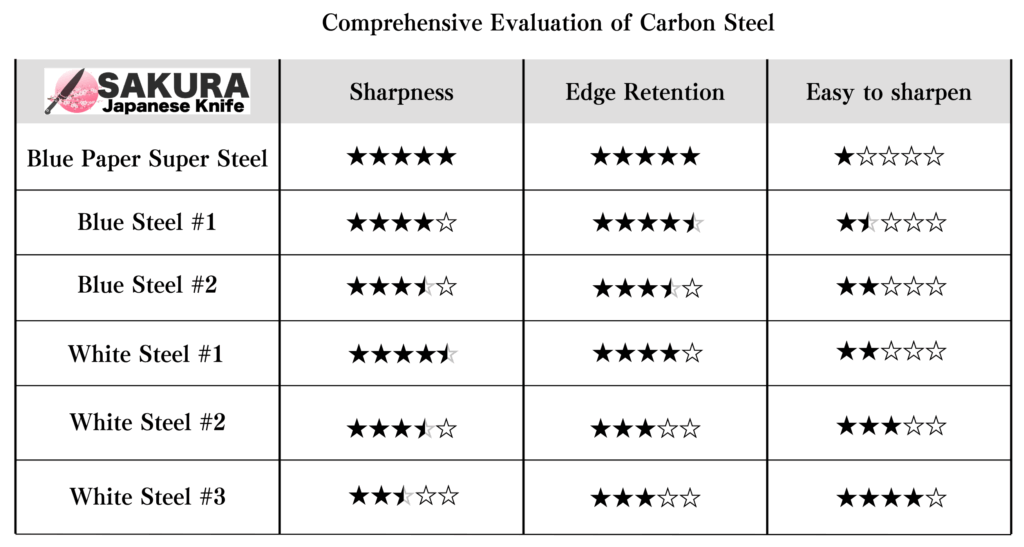
Carbon steel options for professional knives include metals like Blue Paper Steel (Aogami) and White Paper Steel (Shirogami) – traditional Japanese high-carbon steels.
White #2 steel (Shirogami #2), made of iron and carbon, is known for its razor sharpness. Blue steel (Aogami), which is White steel alloyed with elements like chromium and tungsten for improved wear resistance and durability, also offers excellent performance but is a bit harder to sharpen.
Each has its pros and cons: for example, White steel sharpens easily but can rust, while Blue steel holds an edge longer but sacrifices some ease of sharpening.
In general, among carbon steels, White #2 and Blue #2 are well-balanced and widely loved by professionals for their combination of sharpness and durability.
Some professionals who demand the utmost sharpness might choose Blue Super Steel (Aogami Super), which can take an extremely keen edge – however, it’s notoriously difficult to re-sharpen, so it requires more maintenance effort.
On the stainless side, as mentioned, the typical stainless steel used in bread knives won’t rust easily but usually doesn’t achieve the same sharpness or ease of sharpening as carbon steel. That said, modern metallurgy has produced specialty steels that bridge the gap.
For instance, powder high-speed steel varieties can rival carbon steel in sharpness, and steels like Silver Paper #3 (Gingami #3) offer a very good balance of sharpness and sharpenability while still being stainless. These advanced steels give bread knives cutting performance close to carbon steel with the low-maintenance benefits of stainless.
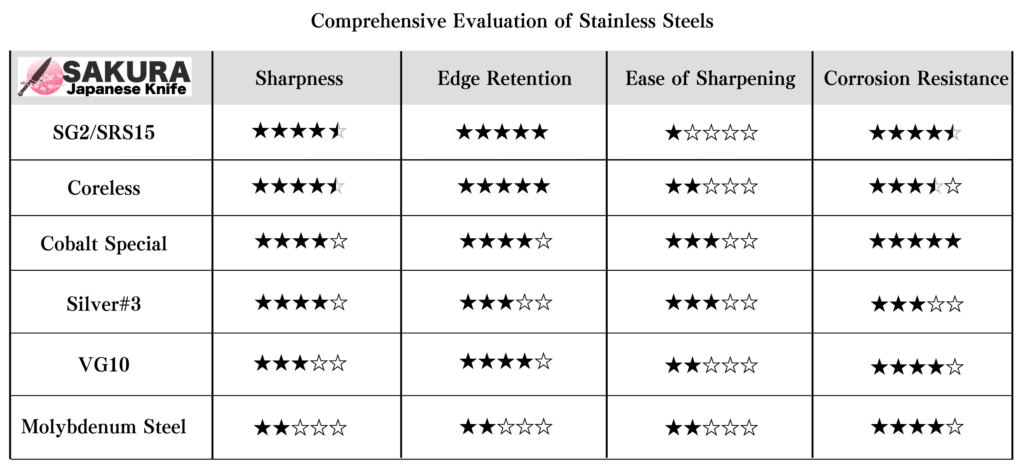
Bottom line: for a bread knife, you don’t necessarily need the hardest steel out there. What’s more important is that the knife can withstand long periods of continuous use and slice through a variety of breads quickly and evenly without constant sharpening. A well-balanced, quality stainless steel is often a smart choice for its durability and ease of care, especially in a pro setting.
Considering all the points above (blade length, serration, material, handle, balance, etc.), try to choose a bread knife that fits your specific needs and environment. The best bread knife for you is one that feels comfortable, stays sharp through your typical workload, and suits the types of bread you handle most. With the right choice, you’ll work more efficiently and achieve beautiful, clean slices every time.
Top Recommended Bread Knives for Professionals (Ranking)
Now, let’s move on to the main topic: our recommended bread knives for professional use, presented in ranking format. These are top rated bread knife models that excel in quality and performance.
We’ve evaluated their materials, design, and user feedback to help you find a knife that meets professional standards. Here are our top picks:
1st Place: Kai Shun Sora Bread Knife 225mm
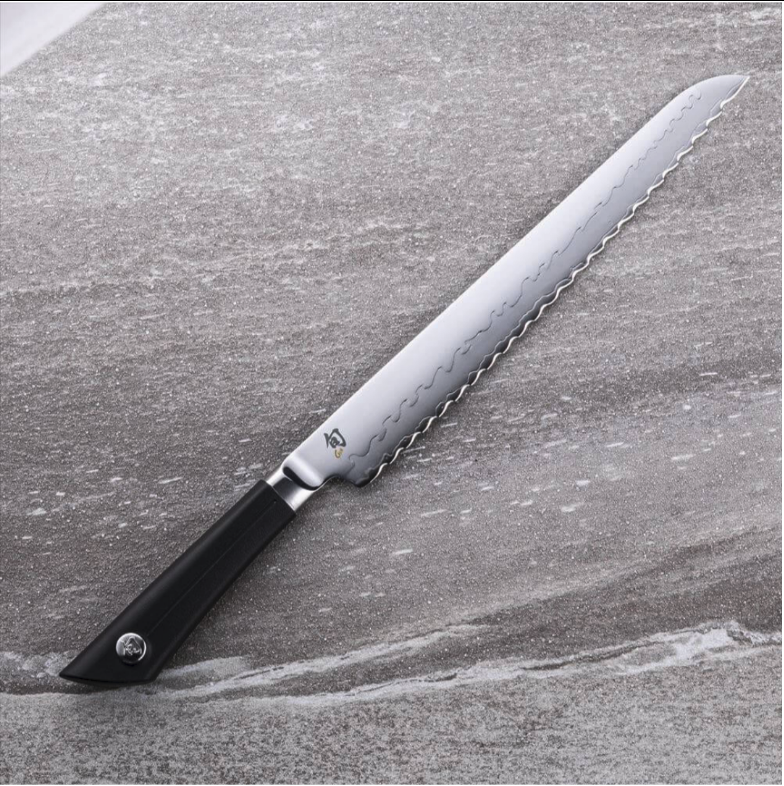
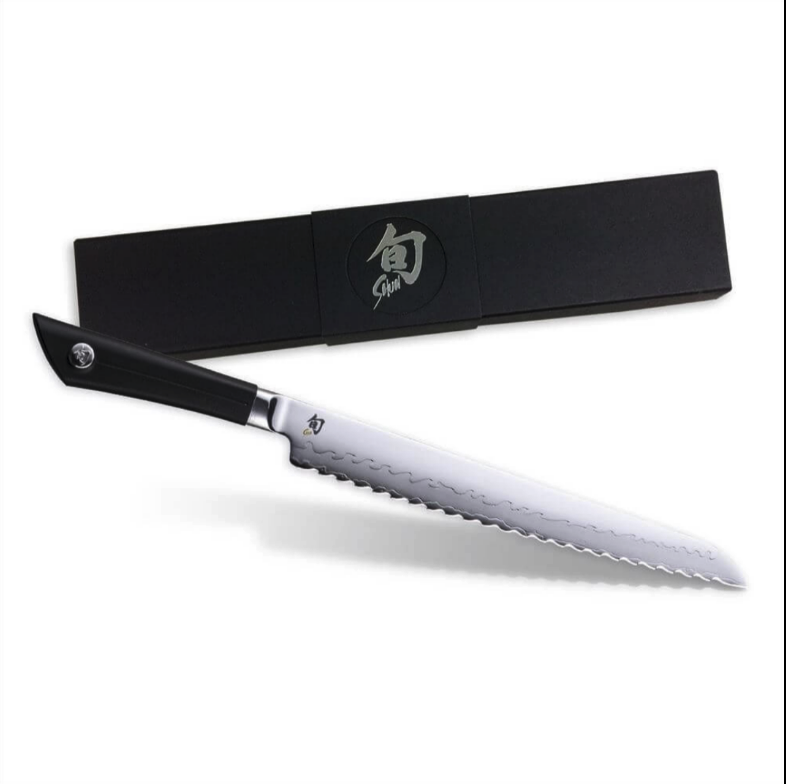
- Sharpness: ★★★☆☆
- Rust Resistance: ★★★★☆
- Ease of Maintenance: ★★★☆☆
- Aesthetics: ★★★★★
- Price (225mm blade): $180
The Shun Sora is a line of knives offered by the Kai Group (the makers famous for the Sekimagoroku series in Japan). This 225 mm bread knife from the Shun Sora line combines a familiar lightweight feel – thanks to its comfortable plastic handle – with a beautifully mirror-polished blade. The result is a knife that glides cleanly even through delicate, crumbly bread without crushing it or making a mess.
The blade steel is described as a high-carbon stainless steel (the exact specification isn’t explicitly stated by the manufacturer, but it is likely comparable to a premium powder stainless steel). In other words, you can expect excellent sharpness with good edge retention and corrosion resistance. The blade also features an attractive patterned Damascus-like finish, making it as much a work of art as a functional tool.
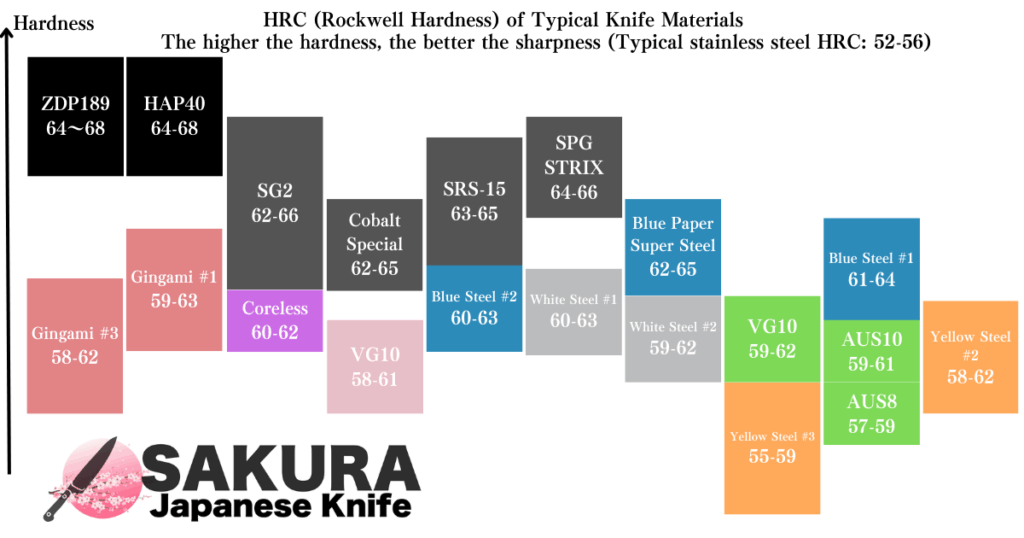
Baker: “This is a bread knife I can truly rely on. It uses high-quality stainless steel and has sharp serrations that cut through all kinds of bread – from crusty baguettes to soft brioche – smoothly and without squashing. Even on a very hard crust, it slices cleanly and leaves a beautiful cross-section. I also love the comfortable grip of the handle; I can slice for long periods (like during morning bakery prep) and my hand doesn’t tire easily. It’s perfect for daily bread-making tasks.”
Chef (Western Cuisine): “From a chef’s perspective, this bread knife is extremely versatile. Its sharp serrated edge lets me make uniform slices whether I’m cutting paper-thin sandwich pieces or thick toast slices. It even handles cakes and pastries well, which elevates the presentation of my dishes. The knife’s durable stainless blade and ergonomic handle design can withstand the rigors of a professional kitchen, and I know I can count on it as a long-term partner in a busy environment.”
2nd Place: Yaxell “YO-U” Bread Knife 200mm

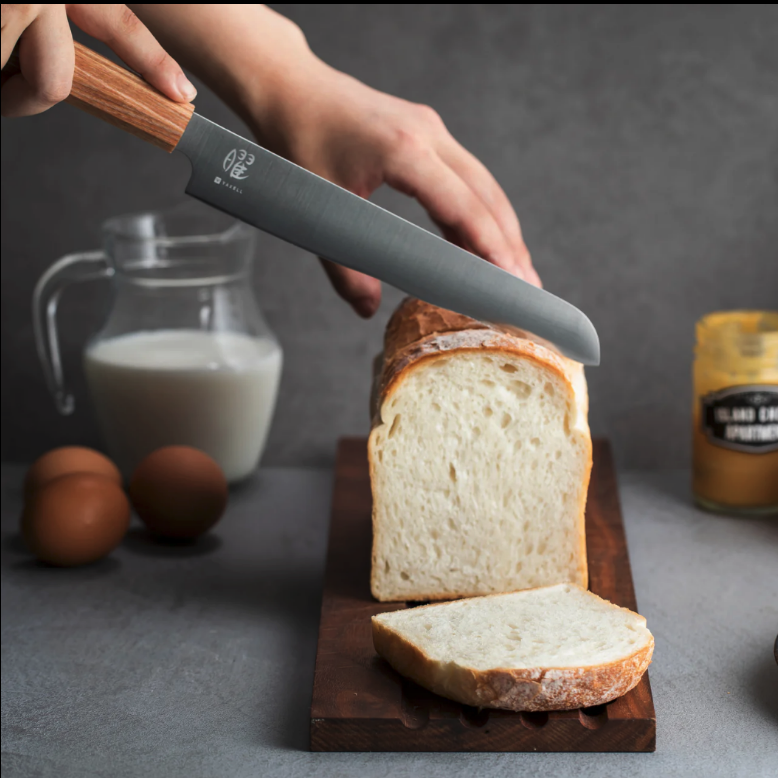
- Sharpness: ★★★☆☆
- Rust Resistance: ★★★☆☆
- Ease of Maintenance: ★★★☆☆
- Aesthetics: ★★★☆☆
- Price (225mm blade version): ¥11,000 (≈ $100 USD) including tax
The YO-U Bread Knife is made by YAXELL, a historic knife manufacturer based in Seki City, Gifu Prefecture – one of Japan’s premier cutlery centers famed for sword-making heritage. Yaxell was founded in 1932 and has nearly 90 years of experience producing high-quality knives.
This bread knife features gently undulating serrations called the “Wavy Blade” (Uneiri-ha), a registered design by Yaxell. These unique wave-like serrations create a slicing action that almost feels like the knife is being pulled into the bread. The design allows you to cut soft bread without crushing it and to slice through hard crusts with virtually no bread crumbs scattering. It’s a very neat cutting experience.
The blade material is VG10 stainless steel (referred to as “V Gold #10”), a high-grade steel known for its excellent balance of toughness, sharpness, and corrosion resistance. This well-rounded steel ensures the knife delivers plenty of cutting performance for bread slicing tasks while being durable and relatively easy to maintain. You can expect it to stay sharp through many loaves and resist rust with proper care.
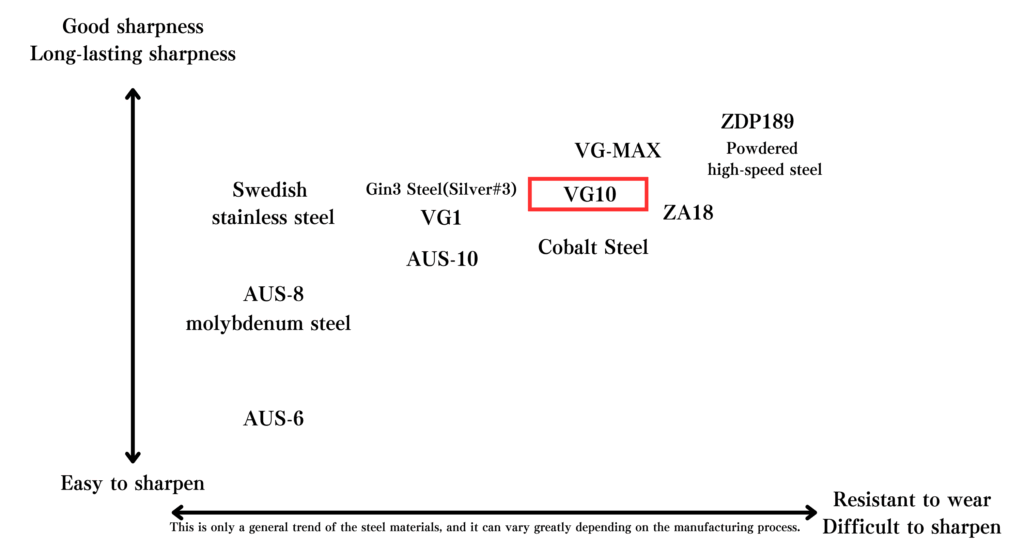
Baker: “Yaxell’s YO-U bread knife is a dependable tool for a baker. Its cutting performance is on the modest side (not the very sharpest I’ve used), but it absolutely gets the job done. I appreciate that I can cut everything from a hard-crusted baguette to a soft loaf of bread smoothly and without squashing the bread. The fact that it doesn’t tear up the soft crumb is a big plus. Also, the stainless blade doesn’t rust easily, which makes daily maintenance simple – I just wash and dry it, no fuss. The knife is lightweight with an easy-to-grip handle, which really helps during long hours of use. Overall, it’s a cost-effective choice that offers great performance for the price.”
Chef (Western Cuisine): “To a chef, this knife is a highly versatile tool. Its outright sharpness isn’t the most extreme, but it’s sufficient for its role – I can even use it for neatly slicing sandwiches or cutting cakes without ruining the presentation. The blade length of about 23 cm (9 inches) is ideal for larger breads and even roulades, and it handles well in the kitchen. The rust-resistant steel and sanitary design give me confidence using it in a busy professional setting. It’s a solid, no-nonsense knife that I’d consider perfect for everyday use.”
3rd Place: Sakai Ichimonji Mitsuhide G-Line Bread Knife (Serrated)

- Sharpness: ★★★☆☆
- Rust Resistance: ★★★☆☆
- Ease of Maintenance: ★★★★☆
- Aesthetics: ★★★☆☆
- Price: ¥14,500 (with tax) for 360mm (~14.2″) version; ¥11,300 for 300mm (~11.8″) version
Sakai Ichimonji Mitsuhide is a renowned knife brand based in Sakai City, Osaka – a region with centuries of blade-making tradition. Each of their knives is carefully hand-finished, carrying on old techniques with modern craftsmanship. While Sakai Ichimonji Mitsuhide is famous for traditional Japanese knives, they also offer a broad lineup that includes bread knives and other Western-style knives.
The G-Line series from Sakai Ichimonji Mitsuhide is known for its excellent sharpness and edge retention. The bread knife in this series uses VG1 stainless steel, a high-quality cutlery steel. (In the world of stainless steels, VG1 is considered a well-balanced steel, in the same league as steels like Gingami#3 for its good mix of sharpness, durability, and ease of sharpening. Thanks to this steel, the G-Line bread knife achieves a keen edge and maintains it well, while still being stainless and relatively maintenance-friendly.
This knife comes in longer blade lengths (300 mm and 360 mm), which means it’s particularly suited for slicing large breads like big baguettes, pain de campagne, and other oversized loaves . The long blade makes it easy to saw through broad loaves in one continuous motion.
Baker: “The Sakai Ichimonji Mitsuhide G-Line bread knife is an ideal tool for professional bakers. It’s made of high-hardness VG1 stainless steel, which gives it excellent sharpness and edge longevity. This means I can smoothly cut through tough-crusted breads like baguettes or campagne loaves, and the slices come out beautiful and clean. The one-piece full-steel construction of the blade (no separate handle rivets on the blade) minimizes crumbs from getting stuck, making it hygienic and easy to clean. Despite its length, the knife is well-balanced so I don’t get tired even during long sessions. It has become an indispensable knife for daily bread production.”
Chef (Western Cuisine): “For a chef, this bread knife proves to be multi-purpose across various tasks. The serrated design allows me to slice everything from soft sandwich bread to bread with hard crusts without crushing and with uniform thickness. It’s also great for cutting sandwiches or even layer cakes, which adds to its versatility in the kitchen. The combination of a rust-resistant stainless blade and a hygienic compressed wood handle means it can endure the demanding environment of a professional kitchen. Over time, it has shown itself to be a reliable partner that stands up to heavy use.”
4th Place: Jikko “Standard (No-Bolster) Bread Knife – Resin Handle”
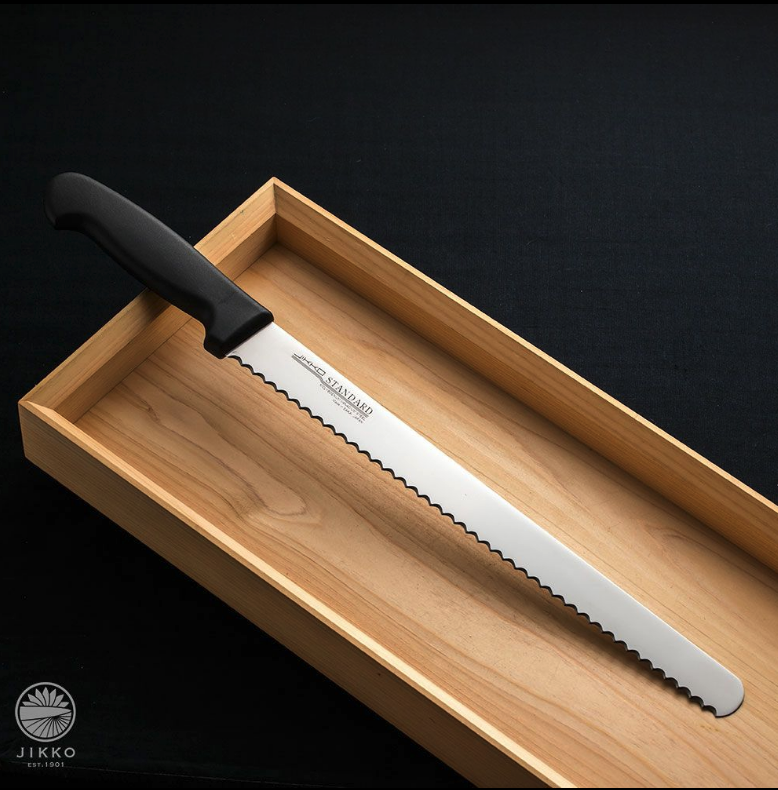
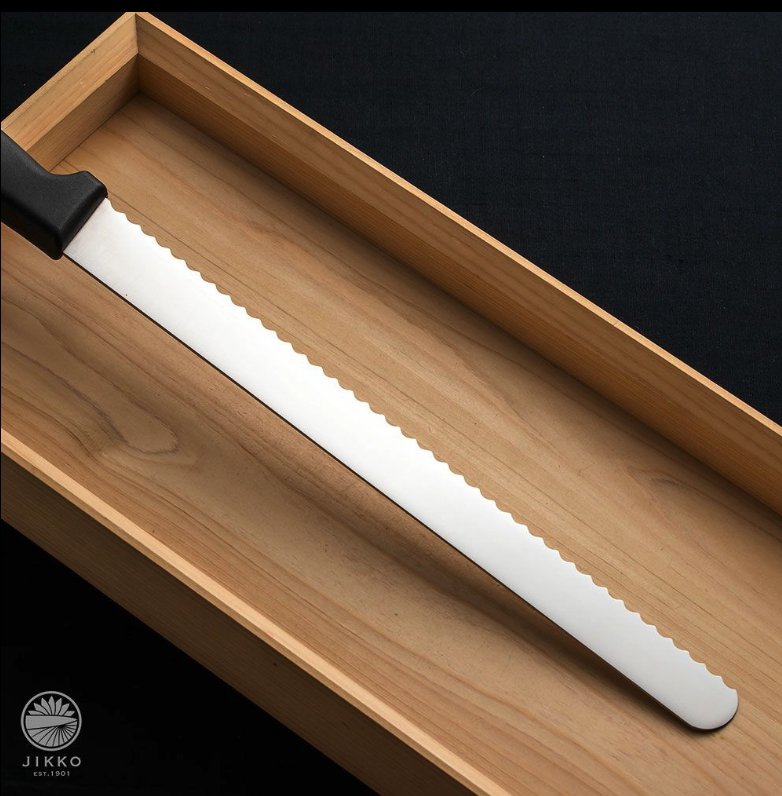
- Sharpness: ★☆☆☆☆
- Rust Resistance: ★★★★☆
- Ease of Maintenance: ★★★☆☆
- Aesthetics: ★★★☆☆
- Price: ¥6,490 (tax incl.) for 250mm (~9.8″); ¥13,420 for 300mm (~11.8″); ¥15,070 for 360mm (~14.2″)
Jikko Hamono (實光刃物) is a long-established knife maker with over 100 years of history, mainly known for producing traditional Japanese knives. Based in Sakai (with a blade-making history of 600+ years), Jikko has inherited exceptional forging and sharpening techniques passed down through generations.
While Jikko typically works with high-carbon steels and premium stainless steels for their knives, their approach for this particular bread knife prioritizes affordability and practicality. The Standard Bread Knife (No-Bolster) model uses Molybdenum stainless steel, a decent quality steel that is more about rust resistance and cost-effectiveness than extreme sharpness. Molybdenum steel still provides sufficient cutting performance for bread, as long as you’re not dealing with extremely hard-crusted artisanal loaves all the time. Its big advantage is being very resistant to rust, which means less worry and maintenance for the user.
This knife is offered in multiple lengths (around 250mm, 300mm, up to 360mm), giving options for different needs. Unless you constantly slice very large loaves, the 250mm size is usually ample and easier to handle, while the longer versions cater to those who need the extra length.
Baker: “For a baker, this knife is a practical, workhorse choice. The sharpness is average – it doesn’t have a particularly razor-like edge – but it’s perfectly adequate for everyday bread slicing tasks. I appreciate that I can cut soft bread without squashing it, which is a must. The use of rust-resistant molybdenum steel is great from a hygiene standpoint as well; I don’t have to worry about the blade corroding, and it’s easy to keep clean. The reasonable price point is a big plus, making this knife a very cost-effective option that still gets the job done reliably.”
Chef (Western Cuisine): “The cutting performance of this knife isn’t outstanding, but it does allow for even slicing from thin sandwich cuts to thick toast slices. The 250mm blade length (~10 inches) hits a sweet spot, handling breads of various sizes while remaining maneuverable in a kitchen environment. I also like the combination of an easy-to-clean resin handle and a rust-resistant blade; it really improves usability in a busy kitchen where you don’t have time for delicate maintenance. All in all, this bread knife is a great everyday tool – straightforward, durable, and highly recommended for routine use.”
5th Place: SUNCRAFT KITCHEN “Seseragi” Bread Knife
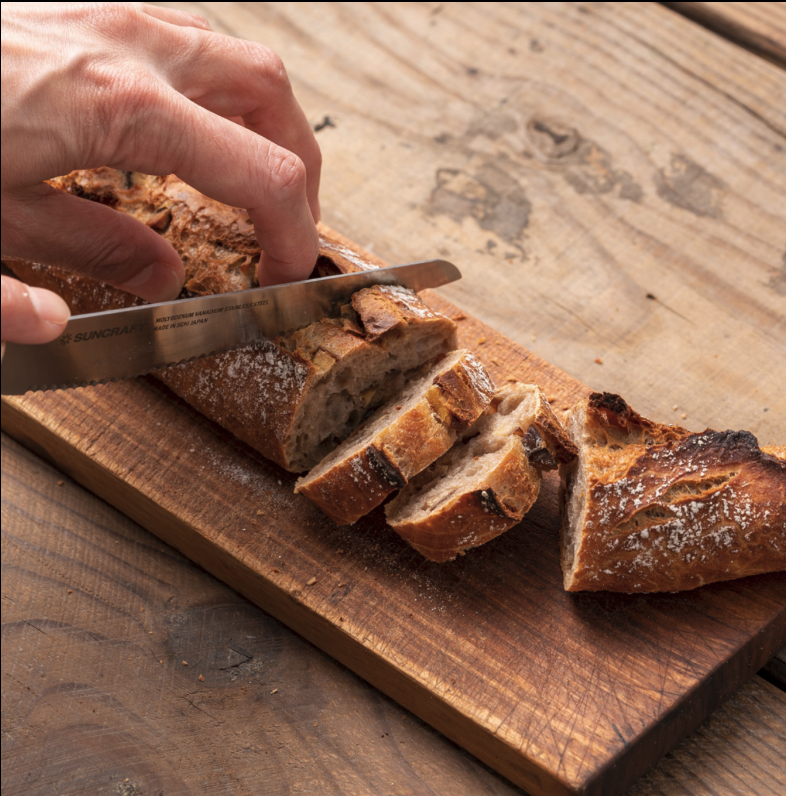
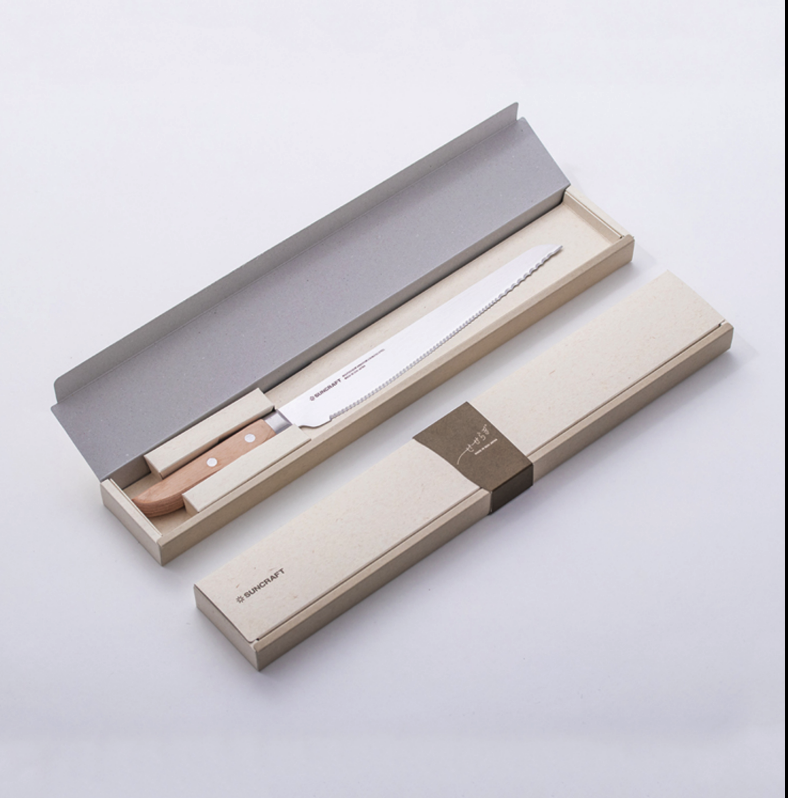
- Sharpness: ★☆☆☆☆
- Rust Resistance: ★★★★☆
- Ease of Maintenance: ★★★☆☆
- Aesthetics: ★★☆☆☆
- Price: ¥5,500 (incl. tax) for 250mm (~9.8″); ¥3,300 for 140mm (~5.5″)
SUNCRAFT KITCHEN (Suncraft) is a kitchen tool and knife manufacturer based in Seki City, Gifu – Japan’s famous knife-making city. Since its founding in 1960, Suncraft has been offering high-quality products for decades. Notably, Suncraft produces a wide range of kitchen utensils in addition to knives, and their products are popular both in Japan and abroad .

The “Seseragi” bread knife from Suncraft Kitchen is unique for having a dual serration pattern on its blade. As shown in the knife’s design, the blade alternates between large serrations and small serrations along its edge. This combination is intentional: the large serrations bite into hard crusts so the knife doesn’t slip and can cut through tough bread, while the small serrations handle soft bread, slicing it without crushing. It’s a clever design that aims to make the knife versatile for both hard and soft breads.
The Seseragi’s blade is made of “stainless steel” as per the product info – given the very affordable price, it is likely a standard molybdenum stainless steel (which balances performance and cost). This means it should resist rust well and be easy to maintain, though it may not be as ultra-sharp or long-lasting in edge retention as more expensive steels. The handle is wooden, which provides a comfortable grip and a classic look.
Baker: “The cutting ability of this knife is about average; it’s not incredibly sharp, but it’s sufficient for everyday bread slicing. What stands out is that it doesn’t crush soft bread – those finer serrations really help with that – so I get nice, clean cuts on delicate loaves. The blade being stainless means I don’t worry about rust, and the wooden handle is easy to grip even during long sessions; it’s also easy on the eyes and hands. Considering how budget-friendly this knife is, I’d say it offers excellent value for the money.”
Chef (Western Cuisine): “From a chef’s viewpoint, this bread knife finds many uses. The sharpness isn’t remarkable, but I can still achieve uniform slices from very thin to thick toast with it. The blade is roughly 21 cm (~8.3″) long, which turns out to be a very versatile length – it can accommodate different bread sizes and is also easy to handle in the kitchen for various tasks. The all-stainless blade and wooden handle combination makes maintenance simple and handling comfortable. In a hectic food prep environment, this knife holds its own, proving to be a great everyday bread knife for general use.”
6th Place: Zwilling “Twin Fin II” Bread Knife 200mm (Made in Japan)
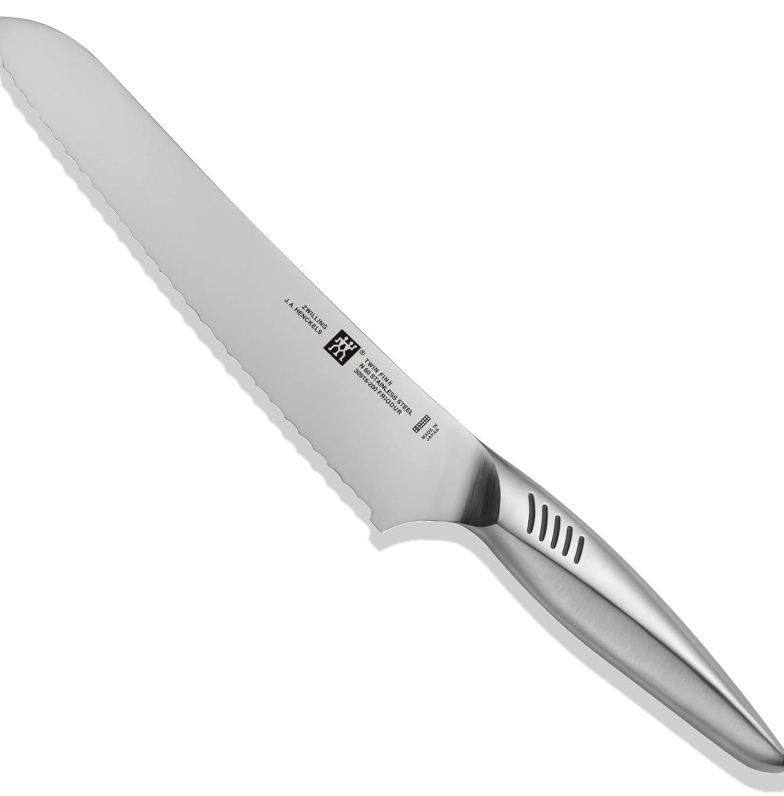
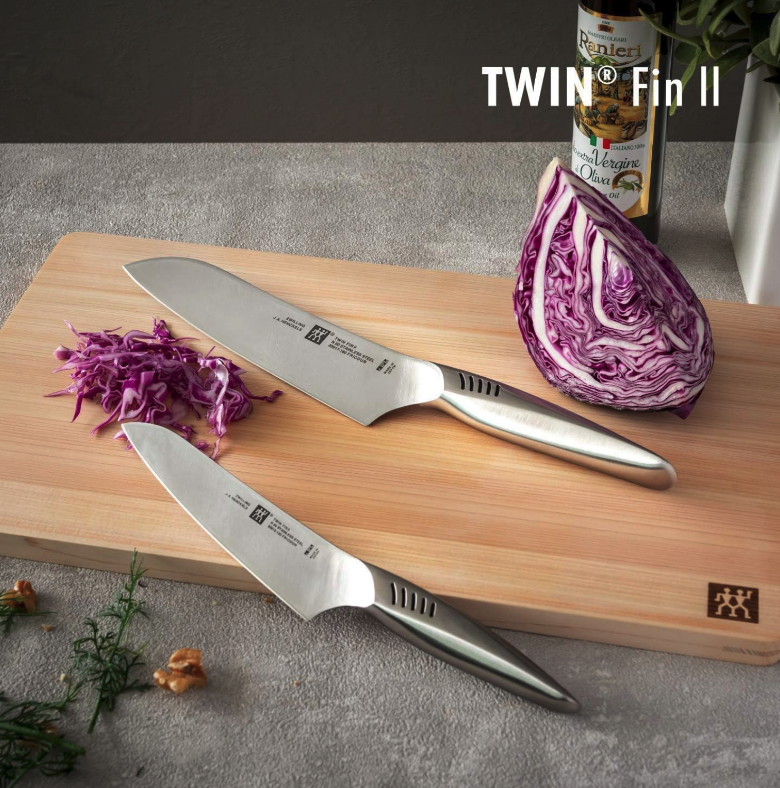
- Sharpness: ★★★☆☆
- Rust Resistance: ★☆☆☆☆
- Ease of Maintenance: ★★★☆☆
- Aesthetics: ★★☆☆☆
- Price: ¥8,584 (incl. tax) for 200mm (~7.9″ blade)
Zwilling is a venerable knife brand founded in 1731 in Solingen, Germany – a city synonymous with fine cutlery. Zwilling has centuries of expertise and is known for using proprietary forging and heat-treating techniques to produce knives that balance sharpness and durability. They offer a wide range of knives, from classic European styles to modern designs, appreciated by professional chefs and home cooks worldwide.
The Twin Fin II bread knife is part of Zwilling’s series that is actually manufactured in Japan, combining German engineering with Japanese craftsmanship. It uses a high-carbon stainless steel, which in the realm of stainless knives is considered to have relatively high cutting performance.
At the same time, it retains the hallmark stainless advantage of being highly resistant to rust although in our rating we note that absolute rust resistance might not be as high as some other stainless knives (likely because of the higher carbon content).
One distinct feature of this knife is its full stainless construction – the blade and handle are one continuous piece of steel. This monolithic design is very hygienic (no handle gaps or joints for food to get trapped) and is even dishwasher-safe, which is a rare convenience for a high-quality knife. It’s a very practical design point, especially for busy kitchens where quick cleanup is important.
Chef (Western Cuisine): “From a chef’s perspective, this bread knife is a versatile performer. Its sharpness isn’t extreme, but it’s enough to get clean, uniform slices whether I’m shaving off thin pieces for tea sandwiches or slicing thick toast. The 20 cm blade (~8 inches) handles a variety of bread sizes and is easy to maneuver. What I really appreciate is the fully stainless one-piece design – it makes the knife super easy to wash (yes, even in the dishwasher when I’m in a pinch) and there’s no worry about the handle degrading. In a busy kitchen, this kind of low-maintenance, all-steel design really improves usability. Overall, it’s a great knife for everyday use – practical, sturdy, and dependable.”
Conclusion
A bread knife is a double-edged Western-style kitchen knife specialized for cutting bread. Unlike knives for cutting fish or meat, a bread knife doesn’t need extreme hardness; instead, it needs to be just hard enough to hold a good edge while ensuring you get clean slices through bread. The focus is on a serration design and length that let you saw through loaves without tearing or squashing them.
When choosing your bread knife – whether you’re aiming for a top-rated bread knife for a professional bakery or simply the best tool for your home baking – consider the types of bread you slice most often and the features that matter for your use case. Factors like blade length, serration style, material, and handle comfort should all align with your needs. For instance, a Japanese bread knife with a long, sharp serrated blade might be ideal if you frequently cut large artisan loaves, whereas a smaller, budget-friendly knife could suffice for occasional baguette slicing at home.
In summary, pick a reliable bread knife that feels right in your hand and meets your performance expectations. Any of the knives in our rankings above would serve you well; it’s just a matter of matching the knife to your preferences and usage. With the right bread knife by your side, you’ll enjoy effortless, clean slicing and elevate your bread-cutting experience – whether in a bustling bakery or your own kitchen. Happy slicing!
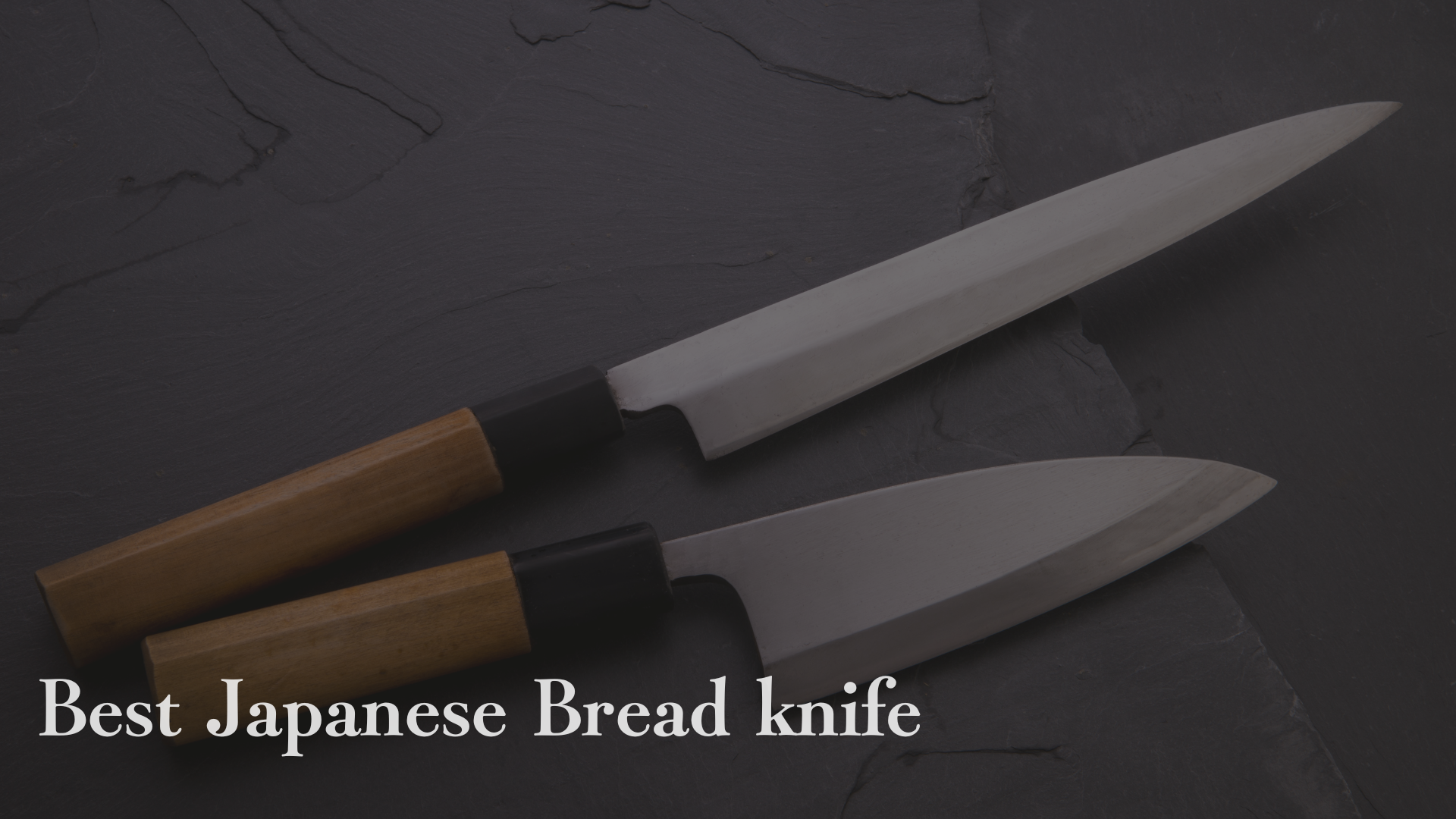
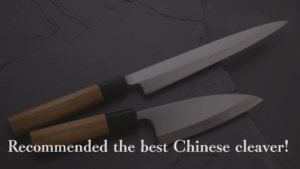
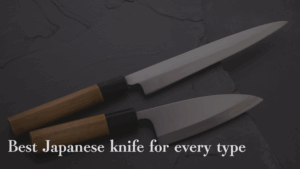

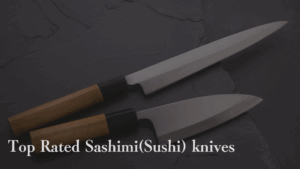
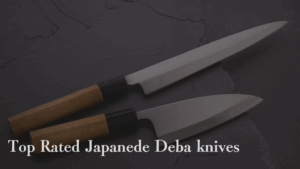
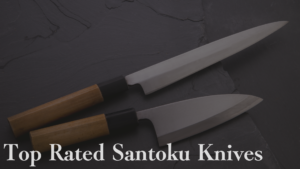
Comments